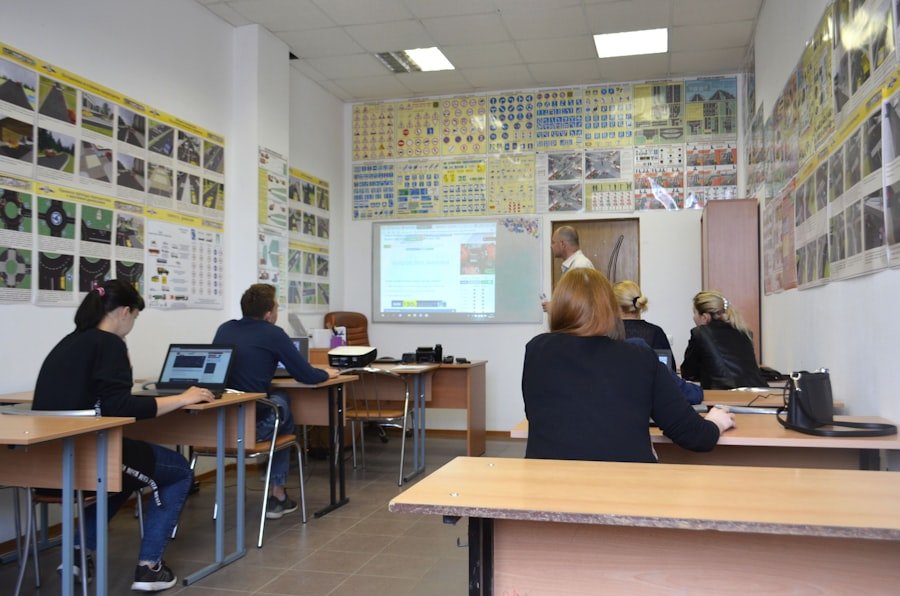The landscape of education has undergone a significant transformation in recent years, particularly accelerated by the global pandemic that necessitated a shift to remote learning. As schools and educational institutions scrambled to adapt, the demand for work-from-home education positions surged. This shift was not merely a temporary response to an emergency; it marked the beginning of a new era in education where flexibility and accessibility became paramount.
Educators who once taught in traditional classrooms found themselves navigating virtual platforms, leading to an unprecedented rise in online teaching roles. This evolution has opened doors for a diverse range of professionals, including those who may not have previously considered a career in education. The rise of work-from-home education positions has also been fueled by advancements in technology and changing societal attitudes towards remote work.
Many educational institutions have recognized the potential for online learning to reach students in various geographical locations, thus broadening their student base. Additionally, the flexibility offered by remote teaching positions has attracted individuals seeking a better work-life balance or those who wish to pursue teaching as a second career. As a result, the market for online educators has expanded, encompassing roles such as virtual tutors, online course instructors, and curriculum developers, all of which can be performed from the comfort of one’s home.
Key Takeaways
- The rise of work from home education positions has been accelerated by technological advancements and the need for flexible teaching options.
- Advantages of teaching from home include flexibility, reduced commute time, and the ability to create a personalized learning environment for students.
- Challenges for work from home educators include managing distractions, maintaining work-life balance, and adapting to new technology and teaching methods.
- Technology and tools such as video conferencing, interactive whiteboards, and educational apps are essential for remote teaching success.
- Creating engaging and interactive virtual classrooms requires creativity, effective communication, and the use of multimedia resources to keep students engaged.
- Professional development and training are crucial for remote teaching success, including staying updated on best practices and learning new technology skills.
- Balancing work from home education positions with personal life requires setting boundaries, time management, and self-care practices.
- Supporting students’ social and emotional well-being in a virtual setting involves building a sense of community, providing emotional support, and promoting mental health awareness.
- The impact of work from home education positions on student learning includes increased access to education, personalized learning experiences, and potential challenges with engagement and motivation.
- The future of work from home education positions in the education industry is likely to continue growing, with a focus on innovation, collaboration, and adapting to changing needs.
- Tips for success in work from home education positions include creating a dedicated workspace, establishing a routine, seeking support from colleagues, and staying adaptable to change.
Advantages and Benefits of Teaching from Home
Teaching from home presents numerous advantages that appeal to both educators and students alike. One of the most significant benefits is the flexibility it offers. Educators can design their schedules around personal commitments, allowing for a more balanced lifestyle.
This flexibility can lead to increased job satisfaction and reduced stress levels, as teachers can allocate time for family, hobbies, or self-care without the constraints of a traditional school schedule. Furthermore, the ability to work from home eliminates commuting time, which can be a considerable source of fatigue and frustration for many educators. Another notable advantage is the potential for enhanced engagement through innovative teaching methods.
Remote teaching encourages educators to explore various digital tools and resources that can make learning more interactive and enjoyable for students. For instance, educators can utilize multimedia presentations, interactive quizzes, and virtual simulations to create dynamic lessons that cater to different learning styles. This adaptability not only enriches the educational experience but also fosters creativity among teachers as they seek new ways to connect with their students in a virtual environment.
Challenges and Considerations for Work from Home Educators

Despite the many benefits associated with remote teaching, there are also significant challenges that educators must navigate. One of the primary concerns is the potential for isolation. Teaching from home can lead to feelings of disconnection from colleagues and students, which may impact an educator’s morale and sense of community.
The lack of face-to-face interaction can make it difficult for teachers to build rapport with their students and collaborate effectively with fellow educators. This isolation can be particularly pronounced for new teachers who rely on mentorship and support from more experienced colleagues. Additionally, the blurred lines between work and personal life can pose challenges for remote educators.
Without a clear separation between their professional and personal spaces, many teachers find it difficult to “switch off” after work hours. This can lead to burnout as educators may feel compelled to respond to emails or prepare lessons outside of their designated working hours. Establishing boundaries becomes crucial in maintaining a healthy work-life balance, yet many educators struggle to implement these boundaries effectively in a remote setting.
Technology and Tools for Remote Teaching
| Technology and Tools | Benefits | Challenges |
|---|---|---|
| Video Conferencing | Real-time interaction, screen sharing | Technical issues, internet connectivity |
| Learning Management Systems | Centralized content, grading tools | Steep learning curve, customization limitations |
| Online Whiteboards | Collaborative drawing, visual learning | Complexity, limited features |
| Screen Recording Software | Flexible content creation, tutorials | Resource intensive, learning curve |
The success of remote education hinges significantly on the technology and tools employed by educators. A variety of platforms have emerged to facilitate online teaching, each offering unique features that cater to different educational needs. Video conferencing tools like Zoom and Microsoft Teams have become staples in virtual classrooms, allowing for real-time interaction between teachers and students.
These platforms often include features such as breakout rooms for small group discussions, screen sharing for presentations, and chat functions for instant communication. In addition to video conferencing tools, Learning Management Systems (LMS) such as Google Classroom and Canvas play a vital role in organizing course materials and assignments. These systems enable educators to create structured learning environments where students can access resources, submit assignments, and track their progress.
Furthermore, incorporating educational apps and gamified learning platforms can enhance student engagement by making lessons more interactive and enjoyable. For instance, platforms like Kahoot! allow teachers to create quizzes that students can participate in during live sessions, fostering a sense of competition and excitement.
Creating Engaging and Interactive Virtual Classrooms
Creating an engaging virtual classroom requires thoughtful planning and creativity on the part of educators. One effective strategy is to incorporate multimedia elements into lessons. Utilizing videos, podcasts, and interactive presentations can capture students’ attention and cater to various learning preferences.
For example, a history teacher might use documentary clips to illustrate key events while encouraging students to discuss their thoughts in breakout rooms afterward. This approach not only makes learning more dynamic but also promotes critical thinking and collaboration among students. Another essential aspect of fostering engagement is establishing a sense of community within the virtual classroom.
Educators can achieve this by implementing icebreaker activities at the beginning of each session or encouraging students to share personal experiences related to the lesson topic. Regularly checking in with students through polls or informal discussions can help gauge their understanding and emotional well-being. Additionally, creating opportunities for peer-to-peer interaction through group projects or discussion forums can enhance social connections among students, making them feel more invested in their learning journey.
Professional Development and Training for Remote Teaching

As the demand for remote education continues to grow, so does the need for professional development tailored specifically for online teaching.
Many institutions now offer training programs focused on best practices for remote teaching, covering topics such as instructional design, technology integration, and student engagement strategies.
Moreover, professional development opportunities extend beyond formal training sessions. Educators can benefit from participating in online communities where they can share experiences, resources, and strategies with peers across the globe. Webinars hosted by educational organizations often provide insights into emerging trends in remote education and offer practical tips for enhancing online teaching practices.
Balancing Work from Home Education Positions with Personal Life
Striking a balance between work responsibilities and personal life is crucial for educators working from home. The flexibility that remote teaching offers can quickly become overwhelming if boundaries are not established. To maintain this balance, educators should create a structured daily routine that includes designated work hours as well as time for personal activities.
Setting specific times for lesson planning, grading assignments, and attending meetings can help create a sense of normalcy while ensuring that personal time is respected. Additionally, incorporating self-care practices into daily routines is essential for sustaining mental health and well-being. Educators should prioritize activities that promote relaxation and rejuvenation, such as exercise, meditation, or pursuing hobbies outside of work.
Engaging in regular social interactions with friends or family members—whether virtually or in person—can also provide much-needed support and connection during times of isolation.
Supporting Students’ Social and Emotional Well-being in a Virtual Setting
In a remote learning environment, supporting students’ social and emotional well-being is paramount. The transition to online education can be challenging for many students who may feel disconnected from their peers or overwhelmed by new learning formats. Educators play a critical role in fostering an inclusive atmosphere where students feel safe expressing their feelings and concerns.
Regular check-ins through one-on-one meetings or anonymous surveys can help teachers gauge students’ emotional states and identify those who may need additional support. Incorporating social-emotional learning (SEL) into the curriculum is another effective strategy for promoting well-being among students. Educators can integrate SEL activities into lessons that encourage self-reflection, empathy-building exercises, or collaborative projects focused on community service.
By prioritizing social-emotional development alongside academic content, educators can help students navigate their feelings while fostering resilience during challenging times.
The Impact of Work from Home Education Positions on Student Learning
The shift to remote education has had profound implications for student learning outcomes. While some students thrive in online environments due to increased flexibility and personalized pacing, others may struggle with the lack of direct supervision or face-to-face interaction with teachers. Research indicates that disparities in access to technology and reliable internet connections can exacerbate existing achievement gaps among students from different socioeconomic backgrounds.
Moreover, the effectiveness of remote education often hinges on the quality of instruction provided by educators. Teachers who are adept at utilizing technology and engaging students through innovative methods tend to see better outcomes than those who rely solely on traditional teaching practices adapted for online formats. As such, ongoing professional development becomes essential in ensuring that educators are equipped with the skills necessary to facilitate meaningful learning experiences in virtual classrooms.
The Future of Work from Home Education Positions in the Education Industry
Looking ahead, it is clear that work-from-home education positions will continue to play a significant role in the education industry. The pandemic has catalyzed a shift towards hybrid models of instruction that blend traditional classroom experiences with online learning components. As educational institutions recognize the benefits of flexibility and accessibility offered by remote teaching roles, it is likely that more permanent positions will emerge within this framework.
Furthermore, advancements in technology will continue to shape the future of remote education. Innovations such as artificial intelligence (AI) and virtual reality (VR) have the potential to revolutionize how educators deliver content and engage with students. For instance, AI-driven platforms could provide personalized learning experiences tailored to individual student needs while VR could offer immersive simulations that enhance understanding of complex concepts.
As these technologies evolve, they will undoubtedly influence the nature of work-from-home education positions moving forward.
Tips for Success in Work from Home Education Positions
To thrive in work-from-home education positions, educators should adopt several key strategies that enhance their effectiveness while maintaining well-being. First and foremost, establishing a dedicated workspace free from distractions is crucial for productivity. Creating an organized environment that mimics a traditional classroom setting can help educators mentally transition into “work mode” each day.
Additionally, leveraging technology effectively is essential for successful remote teaching. Familiarizing oneself with various digital tools available for lesson delivery and student engagement will empower educators to create dynamic learning experiences. Regularly seeking feedback from students about what works well—and what doesn’t—can also inform instructional practices.
Finally, prioritizing self-care cannot be overstated; taking breaks throughout the day to recharge mentally and physically will ultimately lead to greater effectiveness as an educator. Engaging with fellow educators through online communities or professional networks can provide valuable support while fostering collaboration among peers navigating similar challenges in remote teaching environments. In summary, while work-from-home education positions present unique challenges alongside numerous benefits, they also offer opportunities for innovation within the field of education that are likely here to stay.
If you are interested in exploring recession-proof careers that offer the flexibility to work from home, you may want to check out this article on 8 Recession-Proof Careers That Will Never Go Out of Style. This article provides valuable insights into industries that are always in demand and can be done remotely. It’s a great resource for those looking to secure a stable job that allows for remote work opportunities.
FAQs
What are work from home education positions?
Work from home education positions are jobs in the education sector that can be performed remotely, typically from the comfort of one’s home. These positions may include roles such as online teaching, tutoring, curriculum development, and educational consulting.
What are the requirements for work from home education positions?
The requirements for work from home education positions vary depending on the specific role. However, common requirements may include a relevant degree or certification, teaching experience, strong communication skills, and proficiency in using online teaching tools and platforms.
What are the benefits of work from home education positions?
Some of the benefits of work from home education positions include flexibility in work hours, the ability to work from anywhere with an internet connection, and the opportunity to make a positive impact on students’ learning experiences. Additionally, remote work often eliminates the need for commuting, saving time and money.
What are some common work from home education positions?
Common work from home education positions include online teachers for K-12 or higher education, online tutors for various subjects, instructional designers for creating online learning materials, and educational consultants who provide expertise and guidance to educational institutions or organizations.
How can one find work from home education positions?
Work from home education positions can be found through online job boards, educational websites, and freelance platforms. Networking with professionals in the education industry and reaching out to educational institutions or online learning platforms can also be effective ways to find remote education opportunities.








